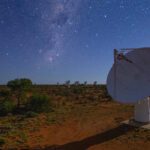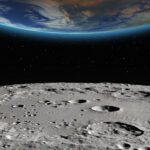After almost a year in orbit, WA’s first homegrown spacecraft has re-entered the Earth’s atmosphere, providing vital lessons for future space missions set to launch next year.
Binar-1, named after the Noongar word for fireball and built by Curtin staff and students, became a fireball itself as it fell deeper into the atmosphere and burnt up shortly after 2am (AWST) on Saturday, October 1.
Binar Space Program Manager Ben Hartig, from Curtin’s Space Science and Technology Centre, said the team’s first space mission had provided them with irreplaceable experience in space exploration.
“Our homegrown spacecraft has completed almost 6,000 orbital ‘laps’ around the Earth, travelling close to 250 million kilometres in total,” Mr Hartig said.
“Throughout its year-long maiden voyage, Binar-1 has taught us valuable lessons about end-to-end spacecraft design that will shape the way we explore space in our next six space missions
“Binar-1 has been a hugely valuable mission with the greatest lessons including locking down mission requirements early, performing power budget testing with flight model systems, preparing for testing delays, planning for satellite operation, and the importance of using custom-designed systems when aiming to perform consistent CubeSat missions.”
Curtin’s Space Science and Technology Centre Director John Curtin Distinguished Professor Phil Bland said he was blown away by the lessons learned from flying Western Australia’s first space capability.
“Our first homegrown spacecraft mission signals a new era in space exploration for our team at Curtin, opening up a pathway to interplanetary missions in the future,” Professor Bland said.
“Binar-1 has also demonstrated the powerful role universities can play in inspiring the next generation of space explorers and setting up a pipeline for the future space workforce to hone their skills.”
To celebrate the launch of WA’s first spacecraft, a “Big Binar” was installed at the WA Museum to allow the public to send their wishes into space. More than one thousand messages were submitted and the team is encoding them to send with the next launch of Binar-2, 3 and 4.
Binar-1 was deployed into space on October 6 last year from the International Space Station. It initially orbited around 400km above the Earth’s surface, and above most – but not all – of the Earth’s atmosphere.
Over the past year, the spacecraft has experienced a small but significant amount of air resistance. This slowed the spacecraft down, which causes it to orbit lower, in turn causing the drag to increase more.
The next missions are underway with three spacecraft Binar-2, 3 and 4 set to launch in 2023. On-board will include staff and student projects including technology to track the spacecraft as it re-enters the Earth’s atmosphere, giving observers – including Binar’s big sister project the Desert Fireball Network – a better idea of where and when the cube satellite is re-entering.
The State Government has supported the Binar Space Program with $3 million in funding, which will support another six space missions. This includes the BinarX program that will see WA high school students designing and building their own missions on the Binar-5, 6 and 7 spacecraft.
For more information on the Binar space program, visit binarspace.com or follow via Instagram and Facebook.



